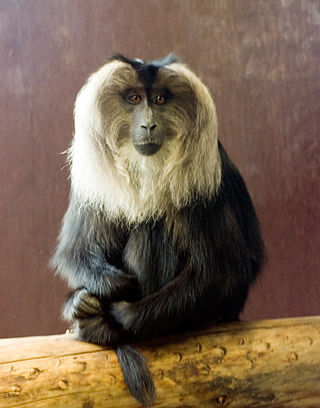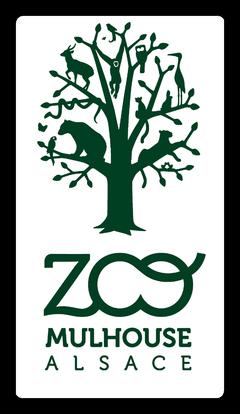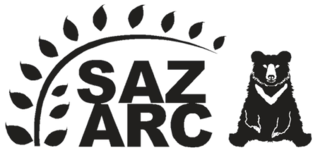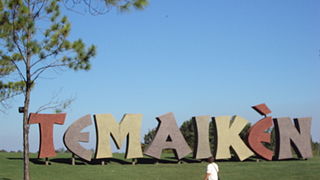
The lion-tailed macaque, also known as the wanderoo, is an Old World monkey endemic to the Western Ghats of South India.

The grizzled giant squirrel is a large tree squirrel in the genus Ratufa found in the highlands of the Central and Uva provinces of Sri Lanka, and in patches of riparian forest along the Kaveri River and in the hill forests of Karnataka, Tamil Nadu and Kerala states of southern India. The International Union for Conservation of Nature (IUCN) lists the species as near threatened due to habitat loss and hunting.

The Himalayan marmot is a marmot species that inhabits alpine grasslands throughout the Himalayas and on the Tibetan Plateau. It is IUCN Red Listed as Least Concern because of its wide range and possibly large population.

The World Association of Zoos and Aquariums (WAZA) is the "umbrella" organization for the world zoo and aquarium community. Its mission is to provide leadership and support for zoos, aquariums, and partner organizations of the world in animal care and welfare, conservation of biodiversity, environmental education and global sustainability.

The British and Irish Association of Zoos and Aquariums (BIAZA) is a registered charity and the professional body representing over 100 zoos and aquariums in Britain and Ireland.
The Central Zoo Authority (CZA) is the body of the Government of India responsible for oversight of zoos. It is an affiliate member of the World Association of Zoos and Aquariums (WAZA).
The Japanese Association of Zoos and Aquariums is an organisation for the zoo and aquarium community in Japan. As of April 30 2021, JAZA has 90 member zoos and 50 member aquariums in the country. JAZA seeks to protect nature and animals through educational and conservation outreach.
The Elvira rat is a critically endangered species of rodent in the family Muridae. The species was first described by Sir John Ellerman in 1946. It is found only in the Eastern Ghats of Tamil Nadu, India.
The Amphibian Ark is a joint effort of three principal partners: the World Association of Zoos and Aquariums (WAZA), the IUCN/SSC Conservation Breeding Specialist Group (CBSG), and the IUCN/SSC Amphibian Specialist Group (ASG).

The Zoo and Aquarium Association Australasia (ZAA), based in Sydney, Australia and Wellington, New Zealand, is an association of zoos, aquariums, sanctuaries and wildlife parks across Australia, New Zealand, Papua New Guinea and the South Pacific Islands, whose central goal is to support and verify animal welfare among its members and in the wild.

Species360 founded in 1974, is an international non-profit organization that maintains an online database of wild animals under human care. As of 2016, the organization serves more than 1,000 zoos, aquariums and zoological associations in 90 countries worldwide. The organization provides its members with zoological data collection and management software called ZIMS—the Zoological Information Management System.

The only regional organization of zoos for Southeast Asia is the Southeast Asian Zoo Association, (SEAZA). It represents around 90 different conservatories and zoos in Southeast Asia. SEAZA became a member of the World Association of Zoos and Aquariums (WAZA) in 1990. SEAZA Headquarters are currently located in Taiwan. SEAZA is considered a sister organization to the South Asian Zoo Association for Regional Cooperation (SAZARC), which organizes zoos in Nepal, India and other countries in South Asia. Although they preside over two similar regions, the cultures and policies of the regions are too different for a single organization to govern both. The main goals of the SEAZA are to, “Strengthen in-situ conservation and management plans, to increase captive breading through research, to improve standards of non human animal welfare, to provide better recreational learning experiences for zoo visitors, to educate the public about the importance of wildlife conservation, and to promote tourism in Southeast Asia.” Achieving SEAZA’s goals is particularly important as Southeast Asia is one of the most biologically diverse regions in the world, but rapid, recent economic growth of these countries has caused this rare ecosystem to be put in jeopardy. However, today SEAZA is facing significant challenges that is putting its future viability in jeopardy.

The Mulhouse Zoological and Botanical Park is a French zoological park located in the Grand Est region in the departement of Haut-Rhin, in the southeast of the city of Mulhouse, district of Rebberg. Created in 1868 by philanthropists industrialists, led by Charles Thierry-Mieg son, he was successively the property of the Cercle mulhousien, of the Industrial Society of Mulhouse, and then of the City from 1893. It is now managed by the agglomeration community of Mulhouse region, Mulhouse Alsace Agglomération. Its director is, since 2010, the veterinary Brice Lefaux.

The South Asian Zoo Association for Regional Cooperation (SAZARC) is an organization for South Asian zoos and aquariums. SAZARC was established on August 4, 2000, at the first meeting of South Asian Zoos, held at Central Zoo, Kathmandu, Nepal, initiated by the Zoo Outreach Organisation (ZOO). It became a member of the World Association of Zoos and Aquariums (WAZA) in 2004, and membership was terminated by WAZA in 2015. SAZARC is considered the sister organization of the South East Asian Zoos Association (SEAZA), the only other regional association of zoos in Asia.

The International Zoo Educators Association (IZE) is a non-profit organization dedicated to improving the education programmes in zoos and aquariums.

Temaikèn is a zoo in Belén de Escobar, vicinity of Buenos Aires, Argentina. It is the only AZA accredited zoo in the country. The name is a portmanteau of tem (earth) and aiken (life) in the language of the native Tehuelche people.

The wildlife of South Asia encompasses that of India, Pakistan, Nepal, Bhutan, Bangladesh, Sri Lanka, Afghanistan and the Maldives.

Rajeev Raghavan is a fisheries scientist and aquatic conservation biologist known for his work on the freshwater fishes of the Indian subcontinent. He is currently an Assistant Professor at the Department of Fisheries Resource Management, Kerala University of Fisheries and Ocean Studies, Kochi, India, and the South Asia Chair of the IUCN’s Freshwater Fish Specialist Group.












